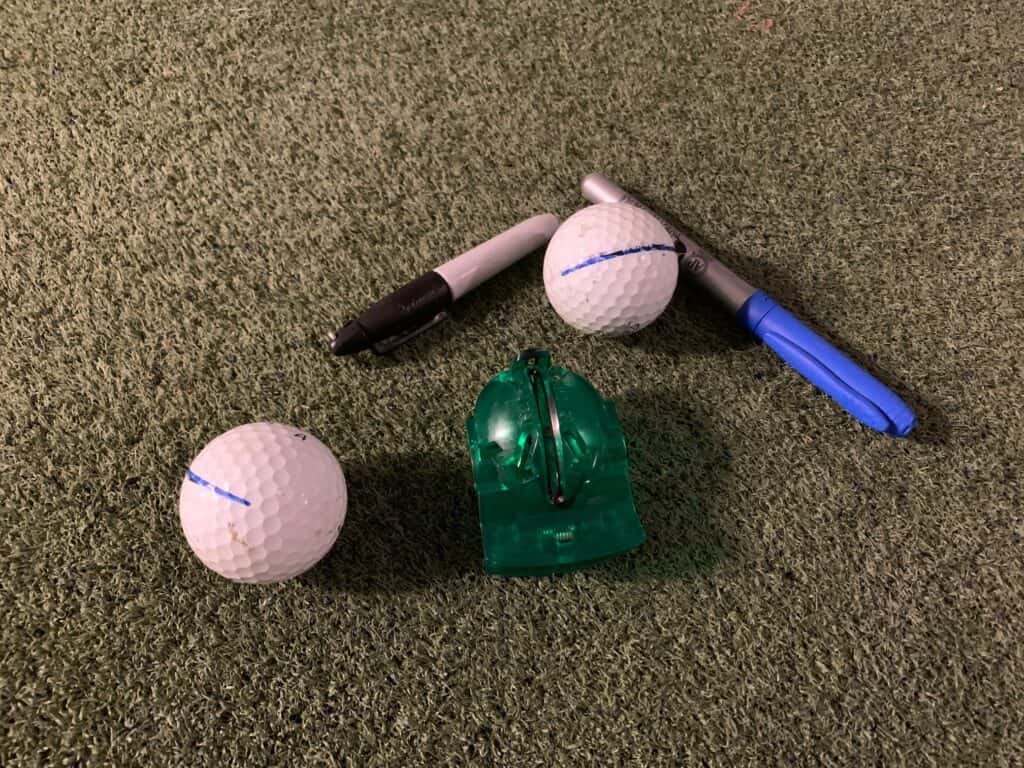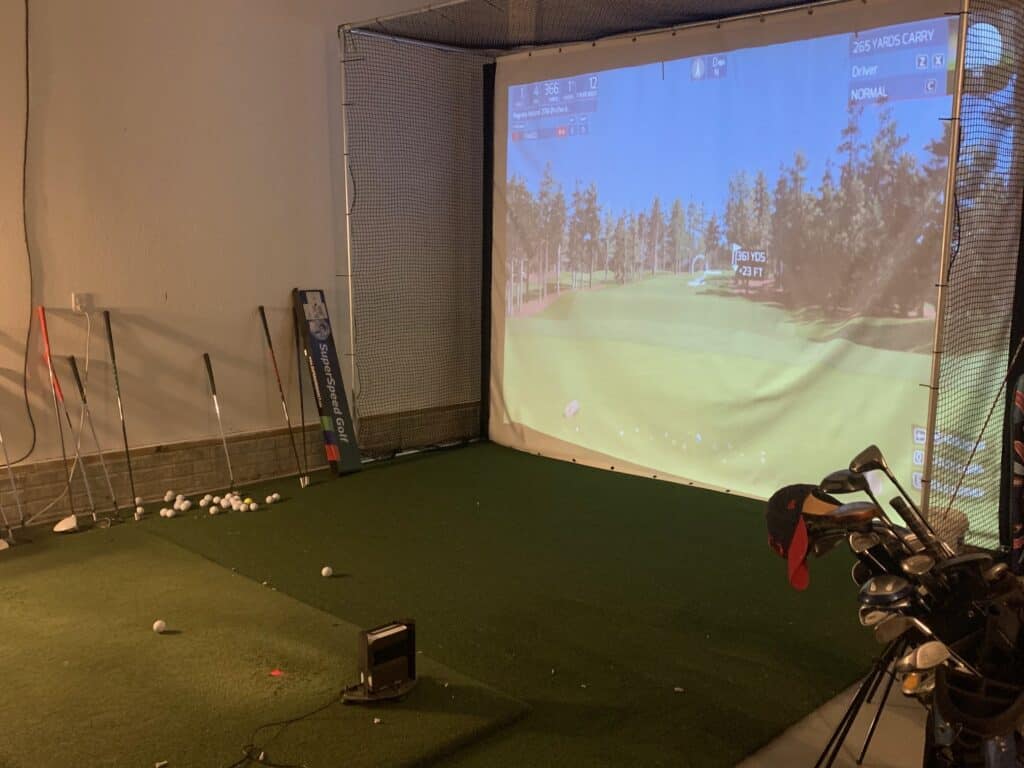If you are someone that struggles with putting, the good news is that there are plenty of variables that you can change.
One of the first options for most golfers is to try a different grip on your putter. The cross handed putting grip or left hand low grip has been popular for years and is often the first place golfers turn to when trying to change it up.
Other areas that golfers often consider are the following:
- Putter Style (Blade vs Mallet)
- Length of Putter (Short, Medium or Long)
- Stance (Square, Open or Closed)
The putter style and the length of the putter both involve getting a new putter, while the grip and the stance options only require some simple adjustments.
If you were on the PGA Tour and had access to hundreds of putters, you might try the putter style of length of putter change, but for most let’s start with the grip or the stance.
For today, we are going to focus on the cross handed putting grip and look at the benefits of the cross handed putting grip and leave you with some general putting tips to help take your game to the next level.
Ultimately, we want to make more putts and have more fun! The cross handed putting grip is an excellent alternative and worth a shot with the putter.
What is a cross handed putting grip?
A cross handed putting grip involves switching the location of your hands on the grip. This puts the left hand closer to the putter head. A traditional grip in golf for the right handed golfer consists of the right hand being closer to the club or the putter head with the left hand being closer to the part of the grip closest to your body.

What are the benefits of the cross handed putting grip?
- Helps take the hit out of the putting stroke
- The golfer is able to secure the left hand
- Provides an alternative and different feel
Benefit #1: Helps take the hit out of the putting stroke
For some golfers who are struggling with a traditional putting grip, they might find that they are hitting at the ball or yipping through the shot in anticipation of impact.
The cross handed putting stroke allows the left hand to be in control and the right hand is there to more steady the putter and go along for the right. With an extended left arm and a quality grip of the left hand, the left hand and arm are in complete control.
The golfer that struggles with an overactive right hand in the putting stroke will benefit from giving this alternative putting grip a chance.
Benefit #2: The golfer is able to secure the left hand
The golfer is able to use the stability of the left arm and hand to his or her advantage. With the left arm and hand in a more extended position, there is less opportunity for the little movements that might occur when the right hand is low and is in a position of power.
Overall, the golfer is able to focus on getting a secure grip and keeping everything stable. The golfer can have the feel of taking the back of the left hand and moving it back and forth with the thought or feel of putting the back of the left hand down the intended target line.
Mallet putter vs blade: Which one should I use?
Benefit #3: Provides an alternative and different feel
Sometimes golfers just need a different feel and an alternative to the traditional approach. If they are lacking confidence with a traditional grip and can head out to the course with some confidence, they are ahead of the game.
Oftentimes, the new feel can not only bring confidence, but simplicity to the game. The new feel can be simple and get the golfers mind off of the bad things that may have happened with a traditional grip.
What length putter should I use?

Do any pros use a cross handed putting grip?
The current list of professional golfers include Jordan Speith, Billy Horshell and Kevin Chappell. The 3rd all time money winner and 2003 US Open Champion, Jim Furyk, has had a brilliant career using a cross handed putting grip.
Should you use a cross handed putting stroke?
Our recommendation is to test it out. Make sure you set up a system to measure your performance and the results. The key is to use a combination of the results and what gives you the best feel and confidence.
Make sure you see our tip #1 below and give it a shot if you are lacking production of confidence in your putting stroke.
We believe that putting is built on two key fundamentals:
- Being able to hit your start line
- Being able to hit the optimum pace for each putt
When a golfer can hit his or her start line at the pace they want, they increase their chances of making more putts. Of course, you are never going to make every putt, but the goal is to give yourself the greatest chance on every putt and this starts with controlling your start line and controlling your pace.
If you are doing these two things, then it comes down to reading greens and performing under pressure.
5 Tips To Help You With Your Putting
- Test out your options
- Practice your short putts
- Practice your lag putts
- Manage expectations
- Be Patient
Tip #1 – Test out your options
I would highly recommend testing out your options. These include the following:
- Putter style (mallet or blade)
- Putter length (short, medium or long)
- Grip (standard, front hand low, or claw)
- Stance (Square or open)
Head to the practice green and try to eliminate one variable at a time. If you are struck with your putter, you can move right to the grip and stance variable in the putting stroke. Start with the cross handed putting grip and take some measurables around the two keys. For example, you could do the following:
- Hit 10 putts from 10 feet with a traditional grip and an cross handed grip
- Hit 10 putts from 30 feet with a traditional grip and an cross handed grip
What were the results? How many did you make from 10 feet? What was your proximity to the hole on the 30 foot putts?
Tip #2 – Practice your short putts
Did you know that the make percentage from 8 feet on the PGA Tour is only 50%? Yes, you read that correctly. The majority of time on the putting green should be spent on hitting putts between 3 and 10 feet and outside of 30 feet. The goal is to make those short putts and avoid the 3 putt from 30 feet or more.
Set up a statiation between 8-10 feet and work on the start line and then work on speed. When you can combine these two on the short putts, you increase your chance of improving your make percentage.
Tip #3 – Practice your lag putts
After the shorts putts, head to the 30-40 foot distance and work on putting the ball inside of 30 feet. Out of 10 putts, how many can you get inside of a 3 foot circle around the hole. Work to hit 100% and get good at laging the putt close to the hole to reduce those pressure 4-6 footers to save par or bogey. Make your round more stress free and keep your energy level high and your mindset positive!
Tip #4 – Manage expectations
The goal with putting is to trust the process. Trust your start line, trust your speed and measure your results based on whether you started the ball on the right line and if you hit it the optimal speed. Do not judge your results on if you make the putt. Obviously, over time, you are going to miss more than you make. There is a three step checklist:
- Did you hit your start line?
- Did you hit the optimum speed?
- Did you trust your line and make a confident stroke?
Tip #5 – Be Patient
Trust your process and your system. The putts will fall eventually. Keep controlling the three variables above and give yourself the opportunity for the ball to fall in the hole. You can’t force a putt to go in, but you can control the three variables above. At the end of every round, think back to your round and grade yourself on every significant putt that you hit.
Stick with the open stance and the different variables you have selected for at least 5 rounds to measure your putting statistics. Don’t jump from option to option after every round, instead give it at least 5 rounds that includes practice time between rounds.

Cross Handed Putting Grip: My Experience
I used a cross handed putting grip for a 3-4 year period during my golf journey. I found the 3-6 footers to be consistent with the cross handed approach, but struggled with the lag putts. I have since found a quality combination with a traditional putting grip and stroke when paired with a mallet head putter.
The weight of the mallet head allows the putter to work naturally back and through and roll the putt vs a hitting-like stroke, which I believe is a key to putting consistently!
My Secret To Golf Improvement
Let’s face it, in order to get really good at golf, we must practice frequently. About three years ago, I made the leap and invested in a golf simulator build for my garage. I went with a SkyTrak Launch Monitor and the TGC software and can now play over 100,000 courses including Augusta, Pebble Beach, Bethpage Black, Whistling Straits. St. Andrews and many other of the top 100 courses in the world.
This golf simulator setup, which is more affordable that you might imagine, has been a game changer. I can now play golf everyday of the year regardless of rain, snow, cold weather or time of day. I can practice or play rounds of golf. I can stand in the 11th fairway at Augusta and with the auto-rewind feature I am able to practice my approach shots from various differences.
It is worth checking out through Rain or Shine Golf as they offer some incredible packages along with financing offers that are difficult to beat.
Some direct links to Rain or Shine Golf for pricing and financing:

Take Action – What You Can Do Today to Get Better
What does this mean for you? I believe in the following recipe to get better:
1 – Improve your motion in the golf swing by identifying a golf instructor. Here are some options:
Here is a list of golf instructors that we have reviewed:
2 – Train to swing faster and improve your swing speed. Here are some options:
Looking to gain more Speed and Distance in your swing. Two Options:
3 – Understand course strategy and work to break through your next barrier. Here is a series on breaking through:
We have provided guides on how to break 100, 90, 80 and 70. Check out more below, if interested.
4 – Practice Frequently
Did you know that I build a golf simulator in my garage and have played over 500 rounds of golf on my SkyTrak system? It has been a game changer and one worth checking out. Here are some of my other posts on golf simulators frequently asked questions:
- Is a Golf Simulator Worth It?
- How to Build a Golf Simulator?
- What is the Best Golf Simulator?
- Golf Simulator Accessories?
- How to Build a Golf Simulator for under $7000
- Top 11 Reasons to Buy a SkyTrak
- How to Build a Golf Simulator for Under $1000
- Why Build A Golf Simulator?
- What Space is Needed?
- Can A Golf Simulator Improve My Game?
- How Much Does A Golf Simulator Cost?
- Don’t Forget to Check out our 15 best golf swings of all time.
I am an amateur golfer on a journey to get better, enjoy the game as often as possible and share my passion and knowledge with others. I have coached high school golfers at a high level and have a great passion for the game and want to give back. I enjoy learning about the golf swing and am currently studying to be a certified professional golf instructor. Join me in our journey to get better everyday.

